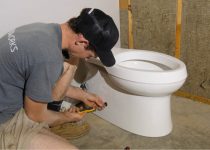Home Flood Protection Ideas For Your House
If your house is located in a region where floods are a concern, then you will want to keep an eye on the flood levels, and remain proactive with measures to protect your home. Homeowners can take various steps to protect their property against flood damage. Some of the effective measures are:
Installing Flood Protection Devices
Home flood mitigation devices are devices that work to prevent flooding throughout the home. These devices include screeds, grate, and even a door. The first step in protecting your house is to determine the areas that are prone to flooding. Then, you should install a flood protection device in these areas. Be sure to secure these devices with screws or bolts so they can’t float away in a flood.
Use Flood Insurance Adjusters
Flood insurance adjusters work to determine the extent of the damage caused by a flood, and then assess the cost of repairing or rebuilding based on established rates. In most cases, these experts will conduct a visual inspection, and then review your claims with an engineer. If you are unable to complete the repair or cleanup, then you can hire these experts to perform this task for you.
Install Flood Barriers
Flood barriers are heavy duty walls which prevent floodwaters from entering the house. They can be constructed with steel or concrete, and some are even made of an inflatable material. The most effective way to install these barriers is by burying them in the ground, and then covering them with sod or topsoil.

Use Sandbags
Sandbags are another popular method used to keep floods at bay. Sandbags work on the principle of “pumping” water upwards. They are stacked to form a wall which keeps floodwaters out of your home. You should also keep in mind that for every sandbag you use, you will need some way to store it once it is filled. Furthermore, it is important that you use the correct materials for your needs.
Use Flood Barriers
Flood barriers are another effective method to prevent flooding. These barriers are constructed by placing a levee in your yard, and then covering it with mulch or soil. While these barriers stop water from entering, they also trap water so that it can’t drain away. This effectively leads to standing water around your house and can also lead to the growth of more unwanted weeds and grasses.
Determine the Cause
You can take measures to protect your home from flooding if you know where the water is coming from, as well as how much time you have to act. If you hear a loud hissing noise, this indicates that there is a high pressure of water coming through something like a pipe. You will want to leave the house immediately if this occurs because it means that there is not enough time for sandbags and other flood barriers to work effectively.


